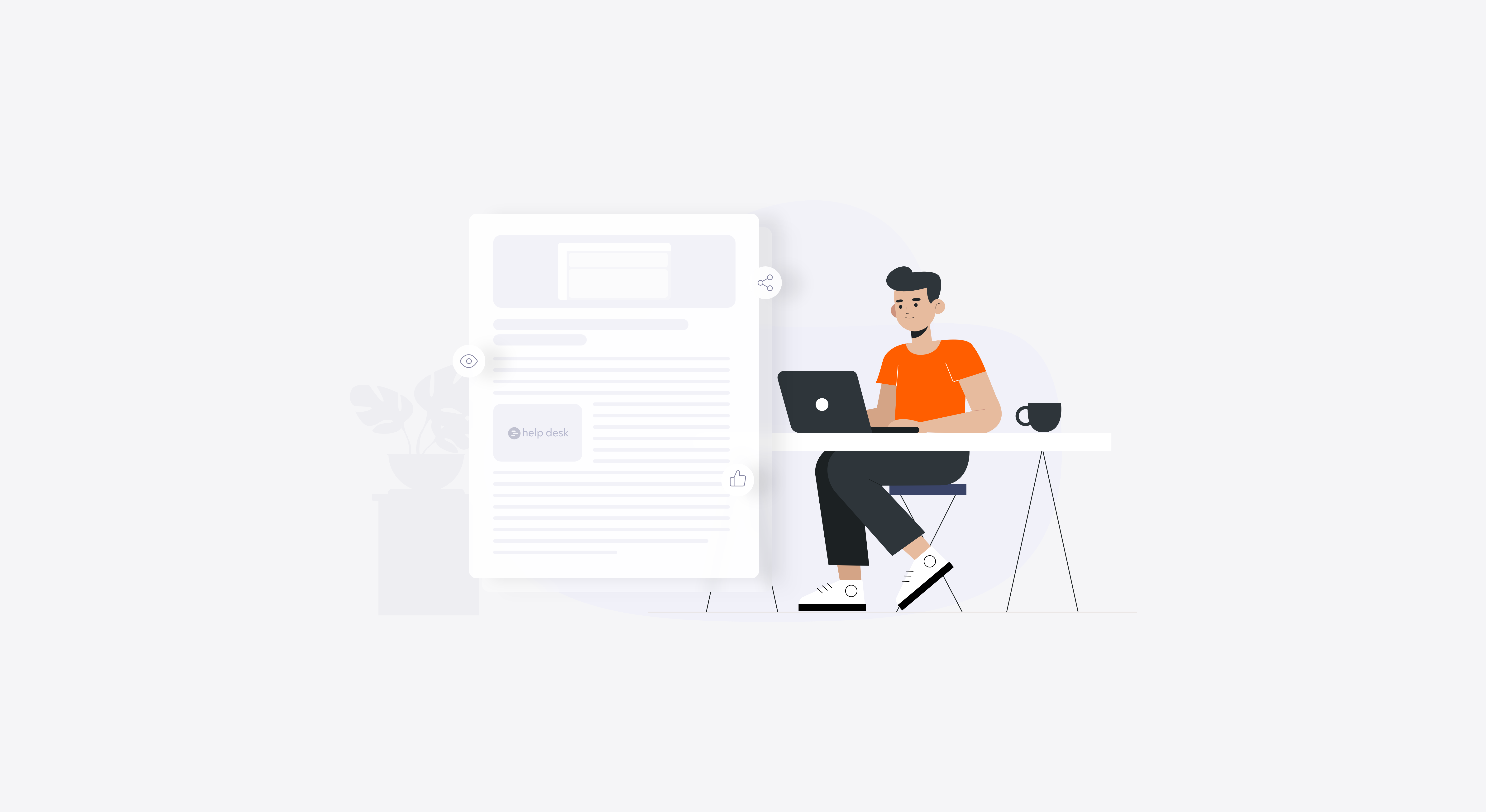What is an Omnichannel Help Desk Software?
Omnichannel Help Desk Software engages with customers across multiple channels of communication to provide a unified customer experience. The key stakeholders involved here are the customers raising issues or queries and the agents resolving them. Omnichannel ticketing systems increase efficiency, flexibility, and speed of resolution.
One Customer, Many channels
Rapid changes in the current landscape of technology have resulted in a plethora of opportunities in which people can engage with each other. Hence, today’s customers are willing to engage with brands through multiple mediums. These include traditional channels like email support, social media, and voice. More recent channels are Live Chat, Support Widgets, and AI-powered Chatbots. Customer support organizations need to cover all the available channels to expand the scope of their engagement with their customers. They ought to use an Omnichannel Help Desk Software which leads to increased customer satisfaction and sustained brand value.
This infographic explains the Omnichannel Help Desk.

The infographic can be downloaded from here
Multiple Paths, Single Destination
Here are the different channels in which customers tend to raise issues and queries. In each of the cases, a support ticket gets created. This helps to streamline the customer requests to a single repository.
- Email: Customers write to a support email id. The Help Desk Software detects this and initiates a ticket.
- Voice Support: Phone calls between a customer and an agent initiate a ticket creation. Organizations that provide phone support are backed by call center software like RingCentral and Aircall.
- Social Media: Integrate with platforms like Facebook and Twitter. Each post triggers a separate ticket.
- Customer Portals: It is a unified interface for customers to access multiple support resources like self-service articles, ticket history, live chat and so on. Customers can create tickets by filling a form.
- Support Widgets: These widgets are web-forms that can be embedded on any website or mobile app. Customers can create tickets without leaving their context.
- Live Chat: Most of today’s chat software has integration with Help Desk systems. Every chat conversation converts into a ticket with the entire chat transcript as a ticket attachment.
- Chatbots: AI-Powered chatbots engage with users automatically. It can respond proactively to messages, analyze and understand an incoming message and provide an appropriate response in real-time.
- Other Sources: Ticket creation can also be based on triggers from external systems. In such situations, integrations enabled through APIs and webhooks helps the system achieve it.
Benefits of Omnichannel Help Desk Software
1. Cut Costs
Reduce repeated queries by the support team to the customer: As channels are unified among them, the context of a ticket is transferred when a ticket moves from one channel to another. For example, a phone conversation may lead to a ticket creation followed by email communication. Later, the support team can have focussed troubleshooting sessions through live chat and agent scripting.
Shield your agent bandwidth with self-service: Using self-service, the precious time of support agents is saved for more value-adding activities.
2. Increase Customer Engagement
Contextually engage with customers: Typically, once a Facebook post is converted to a ticket, the customer can continue to use the same Platform. All updates to that ticket by the support agent will automatically get posted onto Facebook so that there are in-context updates to the customer.
Increased choices for customers: Users typically get all their ticket updates to their emails and customer portals, accessible through their phones. This gives enormous flexibility to customers as they can choose to engage with brands through multiple channels.
3. Drive Organizational Growth
Detect customer trends and pulse: With integrated channels and increased access to technology, customer inputs are captured extensively. These help to gauge customer sentiment, likely retention rate, highlights of the product and also measure satisfaction.
Design better support processes: Organizations can now better understand key factors influencing customer support. Aspects like customer behavior, the effectiveness of self-service modes, agent productivity can now be viewed by each unique channel. These can give crucial inputs for support teams to strategize their resources and processes.
4. Understand the Digital Footprints of the Customer
Leverage customer information across channels: As customers communicate with brands across different channels, their footprints begin to reveal their unique identity. For example, an Omnichannel Help Desk Software can collect the history of a customer’s posts on social media, his voice conversations with the support team, email messages, frequency of chats and the nature of issues raised.
Access customer data from integrations: Also, using integrations with 3rd party applications, it can quickly bring in details of the customer from other integrated systems like CRMs, contact management software, e-commerce platforms, payment apps and much more.
Conclusion
The landscape of customer support communication is bound to evolve into newer dimensions. Omnichannel Help Desk Software is best positioned to leverage these opportunities and give a holistic support experience and maximized customer satisfaction. Hence, setting up your omnichannel helpdesk is fundamental for the success of your customer support organization.
HappyFox Help Desk helps your organization seamlessly deliver successful omnichannel experiences to your customers. To know more about the HappyFox Help Desk, sign up for a short demo.








